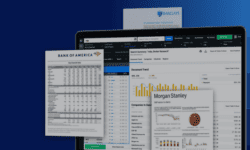In the world of business, buy-side and sell-side research both play a pivotal role in guiding investment decisions. Moreover, understanding the differences between the two is crucial for anyone involved in the markets, as they have disparate purposes and intended audiences.
Buy-side research is conducted by institutional investors such as mutual funds, hedge funds, and asset managers. These analysts focus on developing in-depth, proprietary insights to support their firms’ investment strategies and maximize portfolio returns. Their research is typically long-term oriented and kept confidential within the firm to maintain a competitive edge.
On the other hand, sell-side research is produced by investment banks, brokerage firms, and other financial institutions that sell investment products. Sell-side analysts generate reports, recommendations, and market analyses intended for a broad audience, including institutional and individual investors. Their goal is to drive trading activity and support their firm’s sales and trading operations, often with a shorter-term focus.
In this blog, we’ll delve into these two types of research, compare their methodologies, objectives, and the ways they interact in the financial markets. Finally, we’ll cover how AlphaSense supports both buy- and sell-side research, as well as the content we offer corporate and consulting clients who are interested in utilizing equity research.
Sell-Side vs Buy-Side Research
What is Sell-Side Research?
Sell-side research, also known as broker research or equity research, are reports developed by sell-side firms for investors, fund managers, and corporate professionals to better understand market dynamics and make smarter business and investment decisions.
Sell-side research is external-facing, and its goal is to generate trading activity and commissions for the firm conducting and publishing it. Its main purpose for brokers and banks is that it helps drive revenue through trading commissions, supports investment banking activities, improves client relationships, establishes market influence, and provides a competitive edge.
What is Buy-Side Research?
Buy-side research is conducted by institutional investors such as mutual funds, pension funds, hedge funds, and asset management firms, to be consumed only by their own firm. Unlike sell-side research, buy-side research is proprietary and, therefore, informs internal decision-making. Its primary purpose is to generate returns for the firm’s portfolio, so analysts focus on the long-term performance of investments. They then use their research to make strategic decisions about buying, holding, or selling assets to maximize returns.
Sell-Side vs Buy-Side Research Methodologies
Because these two types of research serve disparate purposes, sell-side and buy-side analysts employ different research methodologies in their processes.
Sell-side analysts typically integrate:
- Fundamental Analysis – Includes financial statement analysis, valuation models, and comparable company analysis
- Technical Analysis – Involves analyzing historical data to identify patterns and predict market movements
- Industry and Market Analysis – Entails evaluating trends within specific industries to understand broader market dynamics, as well as considering macroeconomic factors that could influence markets
- Quantitative Analysis – Could include statistical models and algorithmic trading
Buy-side analysts often include:
- Fundamental Analysis – Conducting thorough due diligence and developing customized valuation models tailored to the firm’s investment strategies and risk tolerance
- Portfolio Analysis – Analyzing portfolio risks and forecasting how different market conditions and events could impact portfolio performance
- Quantitative and Qualitative Analysis – Utilizing advanced quantitative methods to develop models that inform investment decisions, while also incorporating qualitative factors like management quality, corporate governance, and competitive positioning into the analysis
The main differences between the analyses sell-side vs buy-side firm perform are:
- Breadth vs Depth: Buy-side analysts usually conduct long-term, in-depth research that is tailored to specific investment portfolios, while sell-side analysts focus on actionable, shorter-term insights that are relevant to a broad client base.
- Customized vs General: Buy-side analysis is customized to better fit the investment style and goals of the firm, and sell-side analysis is standardized to appeal to a wide audience.
- Risk Management: Buy-side analysts are more focused on risk management than sell-side analysts are.
- Company and Expert Engagement: Buy-side analysts tend to engage more directly and frequently with corporate management and industry experts, as they are focused on longer-term investments.
How do Buy-Side and Sell-Side Analysts Work Together in the Financial Markets?
The work buy-side and sell-side analysts do is highly synergistic. Sell-side analysts produce research reports, market insights, and trade recommendations that buy-side analysts use to inform their own research and investment decisions. These decisions will in turn influence future sell-side research and create a synergistic relationship defined by efficient information sharing as well as informed investment and trading activities.
Additionally, buy-side and sell-side analysts collaborate through events organized by sell-side firms, such as industry conferences or meetings with company management, which provide buy-side analysts with deeper insights for their research.
This synergistic relationship results in more efficient information flow and better-informed investment and trading activities.
Regulatory Impact: Buy-Side vs Sell-Side Research
Regulatory changes, such as MiFID II and the Global Research Analyst Settlement, have significantly influenced interactions between analysts by emphasizing research independence and transparency.
These regulations require a clear separation between research and investment banking activities, leading to more objective, unbiased research that buy-side firms can safely rely on. For example, MiFID II requires buy-side firms to pay for sell-side reports, which ultimately pushes sell-side analysts to produce more valuable and impactful research.
Additionally, sell-side analysts now need to provide more detailed explanations of their analytical methods and assumptions, which enhances transparency for buy-side analysts. The adoption of advanced technologies and data analytics has also become more prevalent, driven by the need to manage information effectively and comply with regulatory standards.
Overall, these regulatory changes have improved the quality, reliability, and transparency of research, benefiting both buy-side and sell-side analysts in making informed investment decisions.
Importance and Value of Equity Research
In today’s fast-moving and often volatile economic environment, the value of equity research cannot be overstated. Currently, 90% of equity research is consumed by fund managers who have the necessary entitlements to acquire it and the resources to mine for insights. For buy-side professionals, equity research is a critical tool to inform sound investment decisions backed by expert insights.
But outside of buy-side analysts, other beneficiaries of equity research now include consultants and corporate professionals—both of whom can glean valuable market insights that enable proactive strategy and allow them to get the competitive edge over their peers.
At AlphaSense, we recognize the importance of equity research, not just for buy-side analysts but for corporations and consultants, which is why we offer Wall Street Insights®—the first and only equity research collection purpose-built for the corporate user.
With Wall Street Insights®, our corporate clients can tap into the deep industry expertise of Wall Street’s top analysts when they make strategic plans or product decisions, conduct competitive analysis, evaluate mergers and acquisitions opportunities, or engage in investor relations. And our consultant clients can deliver the highest-quality proposals and better, more data-driven advice to their clients, while also accelerating growth for their organization.
AlphaSense Supports Both Buy-Side and Sell-Side Research
While buy- and sell-side research serve different purposes and target audiences, they play an important role in supporting one another. Buy-side research, for instance, is produced for internal use and informs a firm’s investment decisions. These decisions will in turn influence the market landscape and analyses that sell-side analysts conduct. On the other hand, the expert analysts’ perspectives found in sell-side research are highly valuable to buy-side analysts in their own research process, as it pertains to their own firm.
AlphaSense is a highly valuable tool for buy-side analysts, including hedge fund managers, asset managers, and private equity analysts, as well as for sell-side analysts. With access to equity research from over 1,500 research providers—in addition to company documents, news and regulatory documents, and expert transcripts—AlphaSense is your one-stop shop for high-quality, comprehensive, fast market research.
Our buy-side clients use our platform to access the same sell-side research they already have entitlements to. But by leveraging our proprietary AI search technology and vast universe of content, buy-side analysts gain a comprehensive view of the market, save time on their research efforts, and uncover insights they would have otherwise overlooked.
For more on how buy-side clients use AlphaSense, see the following pages:
Meanwhile, our corporate and consulting clients who do not have relationships with sell-side research firms can rely on our Wall Street Insights® content set—a premier research collection with equity research from the world’s leading brokerage firms, including JP Morgan, Bank of America, HSBC, and Wells Fargo.
This content set features both real-time and aftermarket research, is sourced from both broker partnerships and vendors, and covers North America, EMEA, APAC, and LATAM regions. With Wall Street Insights®, you can conduct more comprehensive competitive analysis, improve client interactions, enhance internal research and strategy, and save your organization time and money with AI and automations.
Unlock the combined power of high-quality research and artificial intelligence technology today. Start your free trial of AlphaSense.




